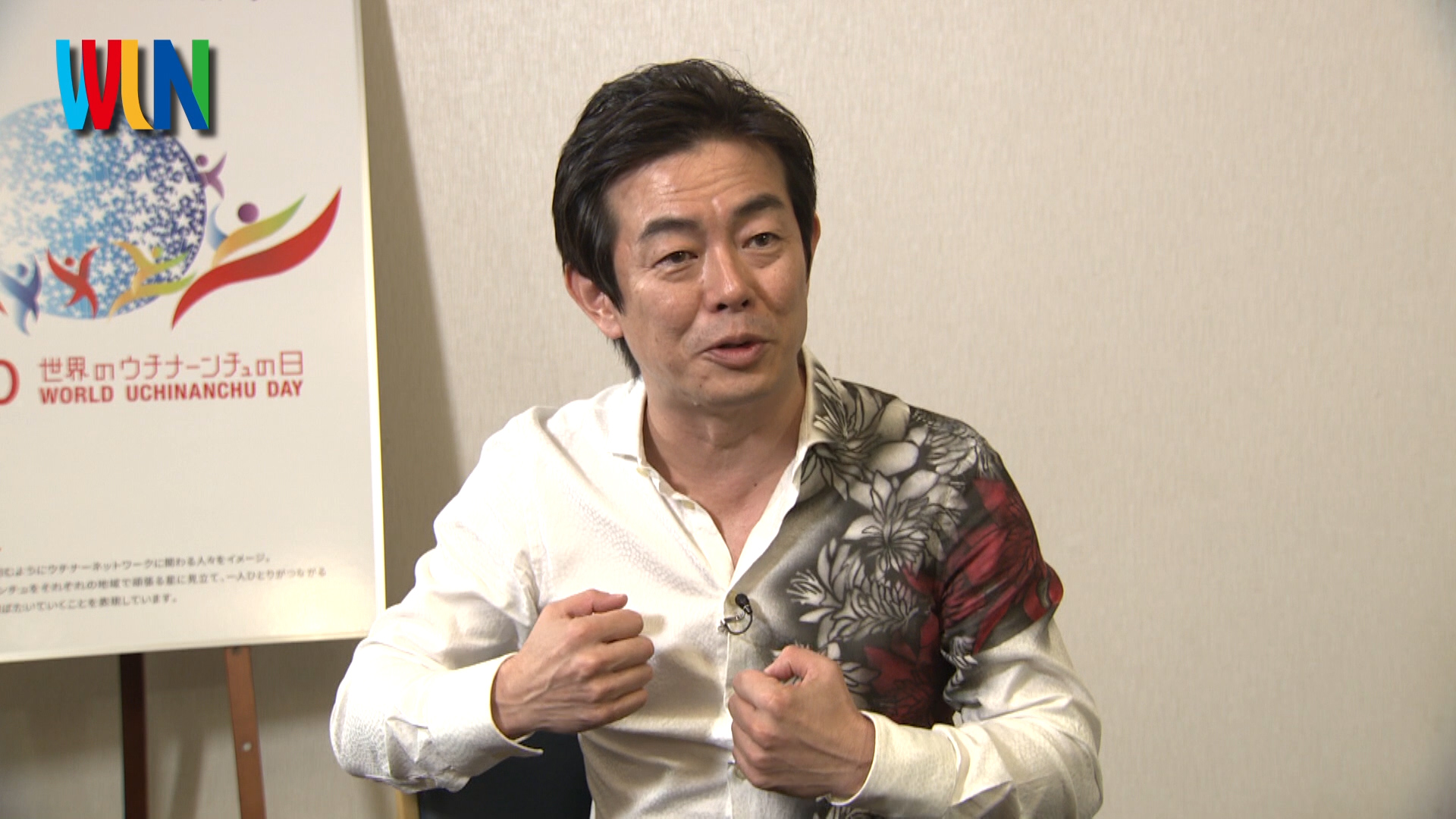The Messages Within in Okinawan Minyo
2018年11月22日
KAZUFUMI MIYAZAWA
How did you first come across Okinawa?
My first encounter was through Okinawan folk songs, minyo. Encountering Okinawan minyo opened up something inside my heart. Even though I had been listening to many different genres of music, I was suddenly aware that the beautiful music of Okinawa existed so close to me. From there, I started to wonder what kind of place Okinawa was and what kind of people make such music, so I came to Okinawa.What changed for you after coming to Okinawa?
I came to Okinawa in my early twenties, and I was embarrassed to find out that I knew nothing of its history or of Okinawa itself. I wanted to learn more about the people of Okinawa. It is people that create the music, minyo, and performing arts, so I felt the need to know Uchinanchus better. Since then and even now, I often fly to Okinawa and study its history.What do you like about Okinawa?
I learned that the people of Okinawa have overcome a lot of history. The tears, sweat, and smiles of these predecessors created the fertile ground for performing arts; I believe the beautiful flowers that have bloomed from that ground are imbued with many different things. What’s amazing about spending time with Okinawans is that one year is made up of all sorts of annual events, such as Lunar New Year, Shiimii (Ancestors’ Day), and eisa season. All of these holidays honor their ancestors, and it is the duty of adults to pass down such customs to their children; the connections above and across the family tree are woven into their lives. I’m sure there were difficult times when they couldn’t celebrate these events, and times when the younger generations left the traditions behind. However even in such situations the people still have pride for the islands in their hearts, which I think is very beautiful. That beauty is the beauty of humanity, so I hope to see that beauty in my hometown, as well as in Tokyo.What projects are you currently working on?
After “Shima Uta” became a hit, I heard more children started to play the sanshin, and its popularity grew with more people around the world. I was very happy to learn that, and felt I was contributing to Okinawa in some way. On the other hand, it pained me to hear that it became difficult to obtain the Kuroki (Symplocos lucida) wood necessary for making sanshin, and the people who needed the materials the most weren’t receiving them. I felt that I created that situation after the popularity of the song. For that reason, I started planting Kuroki trees little by little in Yomitan Village five years ago. Currently there are about 3000 Kuroki trees; I dream of them one day becoming instruments 100, 200, or 300 years in the future.What is the connection between Okinawa and the performing arts?
I believe it is Okinawan tradition to create songs that symbolizes each era of its history, and that is the foundation of Okinawan minyo and performing arts. I think it is very wonderful to portray the perspectives of ordinary people, and turning bitterness and sadness into music and entertainment. In that sense, “Shima Uta” may have been a song to express the Okinawa of the early 90s. I think there were other classics that were released later that also represented that era. I’m sure circumstances in Okinawa will continue to change over time, and the messages that need to be said will change as well. I want to make songs like that and deliver my message through the people that sing them.A message to Uchinanchus
There are many Uchinanchus all over the world, preserving Okinawan traditions in each location by continuing to celebrate Okinawan events and holidays. This is something that is not easy to continue doing, and doing so connects networks together. I believe that the young children of the next generation will become adults by looking up to the previous generation and thinking, “I want to be like them”. It doesn’t matter if it’s karate or eisa, the fact that these traditions continue on is Okinawa’s source of power; the tradition of honoring one’s ancestors is also a deep connection to Okinawa. I think this is the spirit of Uchinanchu. I hope young children will carry these traditions into the future and make sure they never die out. I love Okinawan minyo, and wish to listen to them until they day I die. I pray they continue to exist and grow long after my death too.







